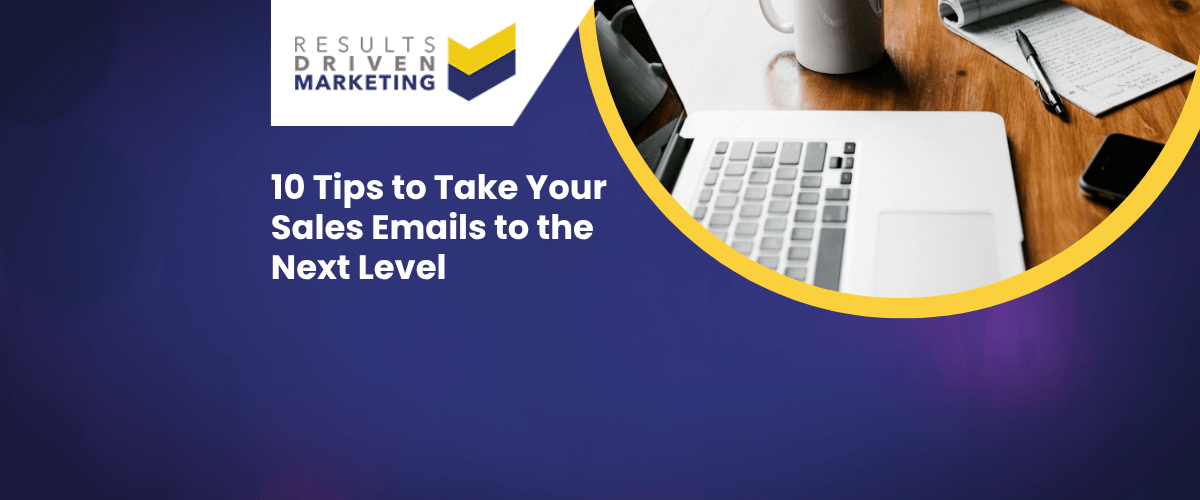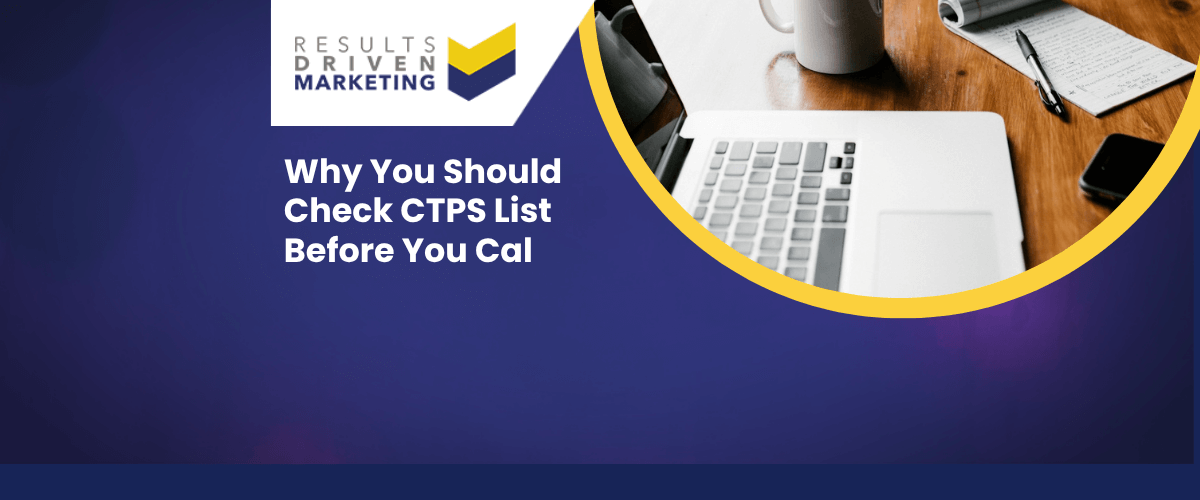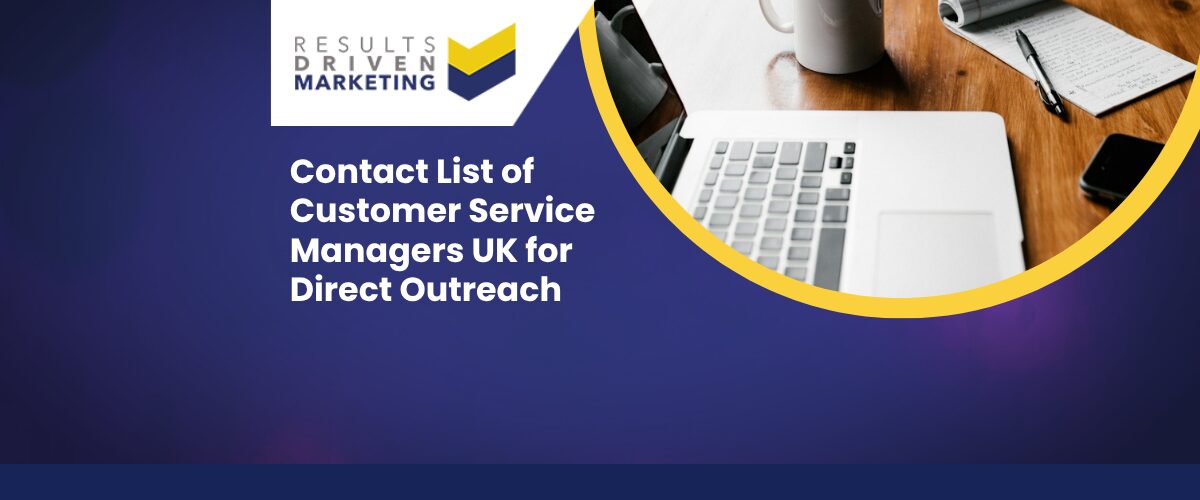
10 Tips to Take Your Sales Emails to the Next Level
Sales emails remain one of the most effective ways for businesses to connect with their audience and drive revenue.
But with so many emails flooding people’s inboxes every day, how can you make yours stand out and capture their attention?
In this article, we’ll explore 10 key strategies for crafting compelling emails that resonate with your target market and compel them to take action.
From personalisation to social proof, visuals to calls to action, we’ll show you how to take your email game to the next level and achieve greater success for your business.
So if you’re ready to transform your email marketing efforts, read on for actionable tips and insights you can start implementing today.
Sales Emails Tip Number #1 – How to write a catchy subject line that grabs your reader’s attention
In a world where people receive hundreds of emails every day, it’s important to make your email stand out from the crowd.
One of the best ways to do that is by writing a catchy subject line that grabs the reader’s attention.
Here are some tips to help you write effective subject lines.
Keep it short and sweet
Your subject line should be short and to the point. Ideally, you want to keep it between 5 and 10 words.
This will ensure that the subject line doesn’t get cut off in email clients and mobile devices.
Plus, it’s easier to read and understand.
Make it relevant
Your email subject line should clearly express what the email is about.
Make sure that the subject line is related to the content of the email.
This will give the reader an idea of what to expect when they open the email.
Use action-oriented language
Using action-oriented language in your subject line can create a sense of urgency or excitement that encourages the reader to open the email.
Examples of action-oriented language include:
“Don’t miss out”, “Limited time offer”, “Act now”, “Last chance”.
Personalise it
Including the recipient’s name in the subject line can make the email feel more personal and increase the chances of it being opened.
Personalisation tools can be used to easily insert recipient names into subject lines.
Ask a question
Asking a question in the subject line can pique the reader’s curiosity and encourage them to open the email.
Questions can also help the reader understand how the email can benefit them.
Examples of question-based subject lines include: “Are you looking to save money on your next vacation?”, “Want to know how to boost your productivity?”
Avoid spam trigger words
Using words that are commonly associated with spam emails can trigger spam filters and reduce the chances of your email being seen. Some common spam trigger words include:
“Free”, “Limited time offer”, “Act now”, “Opportunity”.
In conclusion, writing catchy subject lines that grab the reader’s attention is crucial for successful email marketing campaigns.
Remember to keep your subject line short and relevant, use action-oriented language, personalise it, ask a question, and avoid spam trigger words.
With these tips in mind, you can create subject lines that stand out from the crowd and entice your target audience to open your emails.
Sales Emails Tip Number #2 – How to personalise your sales emails to engage subscribers and prospects
In today’s world of digital marketing, personalised communication is key to engaging prospects and subscribers.
One effective way to personalise your communication is through sales emails.
Here are some tips for personalising your sales emails and increasing engagement.
Segment your audience:
Before crafting your sales emails, it’s important to segment your audience based on their interests, demographics, and behaviour.
This helps you tailor your messaging to their specific needs and interests.
Use a personal tone
Address your subscribers by name and use a conversational tone to make the email feel more personal.
This will help build a connection with the recipient and increase the likelihood of engagement.
Focus on their needs
Highlight how your product or service can address their specific pain points or needs. Show them that you understand their challenges and have a solution for them.
Add a human touch
Include a personal touch in your sales emails.
This could include adding a personal story, including a picture or video of yourself, or adding a handwritten signature.
Use dynamic content
Use dynamic content in your sales emails to show different content based on the recipient’s behaviour or preferences.
This is a great way to provide a personalised experience without requiring significant manual effort from the marketer.
Test and refine
Like any marketing strategy, it’s important to test and refine your sales emails.
Use metrics such as open rates, click-through rates, and conversions to track the success of your emails and make adjustments as necessary.
By following these tips, you can create personalised sales emails that engage your subscribers and prospects, ultimately leading to increased sales and revenue for your business.
Sales Emails Tip Number #3 – Keep the body of the email concise and to-the-point, focusing on the benefits of your product or service rather than its features
Keeping the body of your email concise and to-the-point has become essential.
This is especially true when it comes to marketing and sales emails, which tend to receive the most scrutiny from busy customers.
However, it’s not just a matter of cutting down on words.
To make your email truly effective, you need to focus on the benefits of your product or service rather than its features.
First, let’s define the difference between features and benefits.
Features are the technical aspects of your product or service.
For example, if you’re selling a software program, the features might include things like multi-platform compatibility, drag-and-drop functionality, or customisable templates.
Benefits, on the other hand, are the positive outcomes that your customers can expect from using your product or service.
So instead of focusing on features, you should focus on the underlying benefits that those features provide.
To keep the body of your email concise, start by identifying the most compelling benefits that your product or service offers.
Think about the problems that your target audience is facing, and how your product or service can help solve those problems.
Make a list of the top benefits, and then work those into your email in a clear and concise way.
When writing your email, be sure to craft a strong, attention-grabbing subject line.
This is your first chance to make an impression, so make it count. Use a subject line that highlights the most powerful benefit of your product or service, such as
“Discover the Secret to Perfect Skin in Just One Week” or “Say Goodbye to Stress with our Revolutionary New App.”
In the body of your email, start with a brief introduction that establishes a connection with the reader.
This could include a reference to a recent news event or a personal story that relates to your product or service.
Then, quickly move into the benefits of your product or service.
Use short, clear sentences and bullet points to highlight the top benefits.
Finally, be sure to end your email with a strong call-to-action.
Encourage the reader to take action, whether that’s clicking through to your website, making a purchase, or signing up for a free trial.
Use language that creates a sense of urgency, such as “Don’t miss out on this limited-time offer” or “Act now to take advantage of our special discount.”
In summary, keeping the body of your email concise and to-the-point is critical when it comes to sales and marketing emails.
By focusing on the benefits rather than the features of your product or service, you can make a stronger impact on your readers.
Start by identifying the top benefits, crafting a strong subject line, and using clear and concise language throughout your email.
And don’t forget to end with a strong call-to-action. Follow these tips, and you’ll be on your way to crafting effective emails that get results.
Sales Emails Tip Number #4 – How to use persuasive language and strong calls to action to encourage the reader to take the desired action, such as scheduling a demo or purchasing your product
Using persuasive language and strong calls to action is one of the most effective ways to encourage potential customers to take the desired action, such as scheduling a demo or purchasing your product.
Whether you are writing content for your website, crafting an email marketing campaign, or creating a social media post, using persuasive language and strong calls to action can help you maximise your conversion rate and drive more sales.
In this part of the article, we will discuss some tips and techniques for using persuasive language and strong calls to action to encourage your readers to take the desired action.
Start with a strong headline
Your headline is the first thing your readers will see, and it is often the deciding factor in whether or not they will continue reading your content.
A strong headline that grabs the reader’s attention and conveys the value of your product or service is critical.
Use strong, persuasive language in your headline to create a sense of urgency and excitement.
Use persuasive language
Effective persuasive language is key to convincing your readers to take action.
Choose words and phrases that evoke strong emotions, such as “amazing,” “revolutionary,” “life-changing,” and “unparalleled.”
Highlight the benefits of your product or service instead of just listing features. Give your readers a compelling reason to take action.
Make it personal
To make your language more persuasive, try to make it more personal and relatable. Use “you” instead of “the customer” or “the user.”
Speak directly to your audience and tailor your messaging to their needs and interests.
Show them that you understand their pain points, and that your product or service can solve their problems.
Create a sense of urgency
One of the most effective ways to drive action is by creating a sense of urgency.
Use language that emphasises scarcity or time sensitivity, such as limited time offers, exclusive deals, or limited availability.
Using phrases like “act now,” “don’t miss out,” or “limited time only” to encourage your readers to take action.
Use strong calls to action
Finally, use strong calls to action to encourage your readers to take the desired action. Your call to action should be clear, specific, and easy to understand.
Use action-oriented language, such as “schedule a demo,” “join now,” or “buy now.” Use contrasting colours and bold text to make your call to action stand out.
In conclusion, using persuasive language and strong calls to action can help you maximise your conversion rate and drive more sales.
Sales Emails Tip Number #5 – Use visuals, such as images or videos, to help illustrate your message and make the email more engaging.
In today’s fast-paced world, people receive hundreds of emails every day.
Therefore, it’s essential to make sure that your email stands out and captures the attention of the reader.
One way to achieve this is by incorporating visuals such as images or videos to help illustrate your message.
Visuals can be an effective tool for enhancing the effectiveness of emails because they provide a break from the monotony of text and help to break up the content into digestible chunks.
They enable you to express complex ideas or information succinctly, and when used appropriately, they can create an emotional connection with the reader.
Here are some tips for using visuals in your emails:
Use visuals that are relevant
Ensure that the type of visual you choose aligns with your message. This will make it easier for your audience to understand your message and retain it.
Keep it simple
Use clear, concise language and avoid using too much text.
Use high-quality images and videos
Using high-quality graphics and videos that are easy to understand and are visually appealing can enhance the overall quality of your email.
Use captions
Placing captions underneath visuals is a great way to provide additional information while making it easy for the reader to understand its context.
Add social media sharing buttons
Encourage recipients to share your email on social media platforms by including sharing buttons. This will help your email reach a wider audience and increase your brand’s visibility.
Use Alt text
Alt text is a description of the visual that will be read out to visually impaired readers or those who have images turned off on their email client.
Ensure that this text description is clear and concise and helps the reader understand the content of the visual.
In conclusion, incorporating visuals in your emails can make them more engaging and memorable for your readers.
When used correctly, they can improve the effectiveness of your message and make it more likely that the reader will take action.
So why not give it a try for your next email?
Sales Emails Tip Number #6 – Include social proof, such as customer testimonials or industry awards, to help build trust with the reader.
Email marketing is an essential component of any successful sales strategy, but how can businesses build trust with their audience and differentiate themselves from their competitors?
One solution is to incorporate social proof into your sales emails.
Social proof refers to the concept that people are more likely to take action after seeing evidence that others have done the same.
In this part of the article, we will discuss how to make use of customer testimonials or industry awards to help build trust with the reader of sales emails.
Why is social proof essential?
In today’s digital age, consumers are constantly bombarded with advertising messages, making it challenging for businesses to stand out from competitors.
Social proof can provide a powerful advantage by establishing trust and credibility with your audience.
By leveraging customer testimonials, industry awards, or other forms of social proof, businesses can demonstrate their expertise, establish their authority, and build confidence in their products or services.
Using customer testimonials
One of the most effective ways to incorporate social proof into your sales emails is through customer testimonials.
Testimonials are powerful because they show that other people have used your product or service and had a positive experience.
Here are some tips for using testimonial in your sales emails:
1. Choose the right testimonials:
Not all testimonials are created equal. Look for testimonials that are specific, detailed, and speak directly to the benefits or results of your product or service.
2. Use video over text: Video testimonials can be even more compelling than written ones because they offer a more personal connection with the customer.
If possible, try to include video testimonials in your sales emails.
3. Highlight the name and photo: Including a customer’s name and photo in your testimonial can add authenticity to your email and help establish trust.
Using industry awards
Industry awards are another powerful form of social proof that can be incorporated into your sales emails.
Awards show that your product or service has been recognised by experts in your field, and imply a level of quality and excellence.
Here are some tips for including industry awards in your sales emails:
1. Highlight the award: Make sure to emphasise the significance of the award and why it’s relevant to your audience.
2. Include a quote from the awarding body: Including a quote from the awarding body can add additional credibility to your email.
3. Focus on what the award means for the customer: Don’t just talk about the award itself; focus on how it benefits your customer.
Conclusion
Incorporating social proof into your sales emails can be an effective way to build trust with your audience and differentiate yourself from your competitors.
By leveraging customer testimonials and industry awards, businesses can establish their expertise, authority, and credibility, making it easier to convert leads into customers.
Remember to choose the right testimonials, use video over text when possible, highlight the names and photos of customers, and emphasise the significance of any awards received.
By following these tips, businesses can create sales emails that resonate with their audience and drive conversions.
Sales Email Tip Number #7 – Experiment with different email formats and styles to find what works best for your audience, such as longer-form emails or shorter, more conversational emails
Email marketing is an essential tool for any business or individual looking to reach and engage with their audience.
However, sending one-size-fits-all emails may not always be the best approach.
Experimenting with different email formats and styles can help you determine what works best for your specific audience and increase your email marketing success.
One important factor to consider is the length of your emails.
Longer-form emails may work well for certain audiences, especially if you’re providing in-depth information or promoting educational content.
However, be mindful that long emails may also appear overwhelming and may cause readers to lose interest.
On the other hand, shorter, more conversational emails may be more effective for engaging your audience and encouraging them to take action.
This type of email can create a more personal connection with your readers and is perfect for promotional offers, limited time deals, or quick news updates.
Another aspect to consider is the email’s design and layout.
A visually appealing email can grab readers’ attention and encourage them to take action.
Test different layouts, visuals, and colours to see what resonates with your audience.
It’s also important to ensure that your emails are mobile-friendly so that they can be easily read on-the-go.
Subject lines are often the first thing that readers see when receiving an email.
A catchy and compelling subject line can grab their attention and encourage them to open the email.
Experiment with different styles, such as question-based or urgency-based subject lines, to see what works best for your audience.
Finally, don’t forget to track your results.
Use analytics tools to monitor your email’s open rates, click-through rates, and conversions.
This data can help you determine which type of email format and style is resonating with your audience and adjust your email marketing strategy accordingly.
In conclusion, experimenting with different email formats and styles can help you better engage with your audience and improve your email marketing success.
Remember to test different lengths, designs, subject lines, and track your results to determine what works best for your audience.
By doing so, you can ensure that your email marketing efforts are effective and targeted toward your audience’s preferences.
Sales Email Tip Number #8 – Use data and metrics to measure your email performance and make informed decisions
In the digital age, email remains a crucial tool for salespeople to connect with their prospects.
Email campaigns send a message to potential customers to establish a relationship, identify their needs, and ultimately make a sale.
However, just sending the email is not enough.
To get the most out of your email campaigns, you need to track their performance using data and metrics.
This will enable you to make informed decisions and optimise your sales email campaigns for better results.
Here are some tips on how to use data and metrics to measure your sales emails’ performance and make informed decisions.
1. Define Your Sales Objectives:
The first step in using data and metrics to measure email performance is defining your sales objectives.
Are you trying to increase the number of leads, close more deals, or reduce customer churn?
Knowing what goals you are trying to achieve will help you establish relevant metrics to track and measure success.
2. Use Open Rates to Gauge Interest:
One of the essential metrics for measuring email performance is open rates – the percentage of recipients who opened your email.
A high open rate indicates that your subject line was compelling and caught the recipient’s attention.
You can use open rates as an indicator of your email’s relevance to your audience.
3. Click-Through Rates to Identify Interest:
Click-through rates are the percentage of email recipients who clicked on a link in your email.
A high click-through rate shows that your email’s content was relevant and engaging, which encouraged the recipient to take action.
Use click-through rates to identify the content that resonates with your audience and the type of messaging that drives engagement.
4. Conversion Rates to Measure Success:
The ultimate goal of sales emails is to convert leads into customers.
Measuring your conversion rate, the percentage of recipients who took the desired action, is an important metric to gauge the email campaign’s overall success.
You can track the conversion rate by monitoring the number of leads who became customers after receiving the email.
5. Monitor Unsubscribe and Bounce Rates:
While email marketing can be a powerful sales tool, it’s also possible to disengage your audience with irrelevant or spammy content.
Two vital metrics to track are unsubscribe rates (how many people opt out of receiving your emails) and bounce rates (how many emails are returned due to an invalid email address or blocked service).
Use these metrics to identify potential issues with your email campaigns and adjust your approach accordingly.
In conclusion, tracking performance through data and metrics is crucial for effective email campaigns.
By defining your sales objectives, monitoring open and click-through rates, measuring conversion rates, and keeping an eye on unsubscribe and bounce rates, you can optimise your email campaigns for better results.
Remember, the key is to make informed decisions based on the data and adjust your approach to resonate better with your audience.
With these tips, you can take your email campaigns to the next level and increase your chances of closing more deals.
Sales Email Tip Number #9 – Be persistent but respectful, following up with the recipient if you don’t get a response but not bombarding them with too many emails
In today’s fast-paced business world, it can be frustrating when you don’t get a response to an email.
However, it’s important to remember that everyone has different priorities, and your email may not be at the top of their list.
So, what should you do if you don’t get a response? The answer is to be persistent but respectful.
Firstly, it’s important to follow up with the recipient.
A gentle nudge may be all that’s needed for them to respond to your email.
However, it’s important to give them some time to respond. If you’ve only sent the email a day or two ago, it’s too soon to follow up.
It’s best to wait at least a week before sending a follow-up email.
When you do follow up, it’s important to keep your tone respectful.
You don’t want to come across as pushy or demanding.
Start your email by acknowledging that you understand the recipient is busy and that you don’t want to take up too much of their time.
Then, remind them of the original email and politely ask if they’ve had a chance to consider your request.
It’s also important not to bombard the recipient with too many emails.
If you don’t get a response after two or three follow-up emails, it’s time to accept that they may not be interested in your request.
Bombarding them with more emails won’t change their mind and may end up damaging your relationship with them.
Finally, it’s worth considering alternative ways of contacting the recipient.
If they’re not responding to emails, perhaps they prefer phone calls or face-to-face meetings.
It’s worth asking if there’s another method of communication that they would prefer.
In summary, being persistent but respectful is key when following up on emails.
Give the recipient some time to respond, keep your tone respectful, and avoid bombarding them with too many emails.
By following these tips, you’ll increase your chances of getting a response and maintaining a positive relationship with the recipient.
Sales Email Tip Number #10 – Continuously test and refine your email approach to improve your effectiveness and maximise your sales potential
Email marketing is one of the most effective ways to reach potential customers and increase sales.
However, it is not enough to simply send out mass emails and hope for the best.
To truly maximise your sales potential, you need to continuously test and refine your email approach.
Here are some tips on how to do just that:
Define your objectives
Before you start sending out emails, it is important to define your objectives. What do you want to accomplish with your email campaigns?
Do you want to increase sales, generate leads or simply raise brand awareness?
Once you have a clear idea of your objectives, you can create email campaigns that are specifically designed to achieve those goals.
Segment your audience
Not all customers are created equal.
Some may be more interested in your products or services than others.
By segmenting your audience according to their interests, behaviour or demographics, you can create more targeted emails that are more likely to be read and acted on.
Use A/B testing
A/B testing is a powerful tool that allows you to test different elements of your email campaigns – including subject lines, call-to-actions and email design – to see which ones perform better.
By testing different variations, you can identify what works and what doesn’t, and adjust your approach accordingly.
Monitor your metrics
One of the most important aspects of email marketing is measuring your results.
By monitoring metrics such as open rates, click-through rates and conversion rates, you can determine the effectiveness of your email campaigns and identify areas for improvement.
Refine your approach
Based on the results of your testing and monitoring, you can refine your email approach to improve your effectiveness.
For example, if you find that certain subject lines result in higher open rates, you can use those subject lines more frequently in your emails.
Similarly, if you find that certain calls-to-action result in higher conversion rates, you can use those calls-to-action more prominently in your campaigns.
In conclusion, by continuously testing and refining your email approach, you can improve your effectiveness and maximise your sales potential.
With the right approach, email marketing can be a powerful tool for generating leads, increasing sales and building brand awareness.
Talk to an email marketing expert today





